1. Turmeric with Curcumin
 The turmeric root has been harvested for more than 5,000 years and is popular in Asian dishes, especially those of India. It can be purchased fresh, in its root form (sometimes hard to find), or dried and powdered. Turmeric contains a compound called curcumin, which studies have shown to have powerful anti-inflammatory properties and is widely believed to promote optimal liver function.
The turmeric root has been harvested for more than 5,000 years and is popular in Asian dishes, especially those of India. It can be purchased fresh, in its root form (sometimes hard to find), or dried and powdered. Turmeric contains a compound called curcumin, which studies have shown to have powerful anti-inflammatory properties and is widely believed to promote optimal liver function.
In addition, there are hundreds of scientific studies demonstrating how curcumin inhibits the growth of various cancer cells including colon, liver, pancreatic, bladder, stomach, kidney, blood (leukemia), prostate, ovarian, bone, brain, breast cancers, and even skin cancer. Curcumin triggers apoptosis, or programmed cell death, which is the body’s natural and necessary way of ridding itself from damaged cells.
In countries where people eat turmeric daily at about 100 to 200 mg (roughly 1-2 teaspoons) over long periods of time, research has shown there to be lower rates of certain types of cancer.
A 2007 US study using curcumin along with chemotherapy to treat bowel cancer showed that adding curcumin to the diet killed more cancer cells than chemotherapy alone. In another study, curcumin helped stop the spread of breast cancer in laboratory animals.
Despite the fact that curcumin has been extensively researched for decades and has demonstrated clear anti-cancer power in clinical trials, it is still not widely prescribed in cancer therapy as there is little financial incentive to do so. Drug companies cannot patent natural substances, and without a patent there is no profit. The good news is that you are still able to benefit from the power of curcumin by using turmeric liberally in your cooking.
Ways to Incorporate More Turmeric into Your Diet
Turmeric root has a light flavor and can be grated or chopped and added to recipes. Turmeric powder can be used on eggs, added to soups and sauces, or rubbed on vegetables or chicken. Chicken Curry is a flavorful dish that includes plenty of this bright yellow spice.
 Adding turmeric to vegetables and then roasting them adds both color and flavor. Coat veggies in olive oil, sea salt, and black pepper, and add turmeric, ginger, and cumin for a flavorful dish. This same recipe also works great as a marinade for grilled vegetables.
Adding turmeric to vegetables and then roasting them adds both color and flavor. Coat veggies in olive oil, sea salt, and black pepper, and add turmeric, ginger, and cumin for a flavorful dish. This same recipe also works great as a marinade for grilled vegetables.
Curcumin is not soluble in water, only in fat. Therefore, it’s best to combine turmeric with a healthy oil such as extra virgin olive or coconut oil whenever possible in recipes. (Note: never use vegetable oils such as corn, soy, canola, sunflower, etc. as these are pro-inflammatory oils, contribute to cancer and are often rancid and genetically modified.)
It’s also highly beneficial to add black pepper to any recipe using turmeric. The chemical piperine in black pepper enhances the bioavailability of curcumin, thereby increasing its absorption into cells, including cancer cells.
Be aware that turmeric contains a very strong color that can easily stain your hands, clothes, and countertops. However it’s this intense pigment that also makes it great for adding color to plain white rice or cauliflower by sprinkling some turmeric on top. (Again, combine with a bit of healthy oil and a liberal sprinkle of black pepper for added benefit.)
 To make a healing tea, you can finely slice or grate fresh turmeric root. Add grated or sliced ginger root and steep in hot water. Sweeten if desired with local honey or green leaf stevia. The longer you steep, the more intense the color and flavor of your tea.
To make a healing tea, you can finely slice or grate fresh turmeric root. Add grated or sliced ginger root and steep in hot water. Sweeten if desired with local honey or green leaf stevia. The longer you steep, the more intense the color and flavor of your tea.
The possibilities are endless with this diverse spice and a little turmeric can easily be included in your daily cancer-fighting diet.
2. Garlic with Allicin
Garlic belongs to a family of vegetables called alliums which also includes onions, leeks, chives, shallots, and scallions. These vegetables are clinically proven to have antimicrobial, antithrombotic (reduces the formation of blood clots), and antitumor applications.
The most recent research into alliums has focused on their potential anti-carcinogenic influences. Garlic has been demonstrated in studies to lower the risk of developing stomach, colon, prostate, and intestinal cancers. Garlic stops cancer cells by blocking the formation of and halting the activation of cancer-causing substances. Garlic is a strong antibacterial agent and has been shown to speed up DNA repair, kill cancer cells, and induce apoptosis.
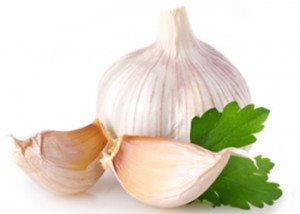 Garlic has also been studied for its sulphur containing compounds, which have been found to be abundant in phytochemicals and flavonoids – both powerful anti-cancer substances.
Garlic has also been studied for its sulphur containing compounds, which have been found to be abundant in phytochemicals and flavonoids – both powerful anti-cancer substances.
A study done at the Amala Cancer Research Centre in India showed that garlic extract inhibited two-stage chemical carcinogenesis on the skin of mice. These results indicate garlic has the potential as an anti-cancer agent as well as an anti-tumor promoter.
The World Health Organization recommends eating approximately one clove of garlic every day. When preparing garlic, it is best to let it sit for 5-10 minutes after slicing, chopping, crushing, or mincing. This is because garlic contains two enzymes (alliin and alliinase) that are separated when the garlic clove is whole. When the cells are ruptured (through cutting, chopping, etc.) these two enzymes interact to form a new compound called allicin which has cardiovascular, antibacterial, and anti-cancer benefits. Allowing the cut garlic to sit for several minutes before adding other ingredients will increase allicin production.
Ways to Use More Garlic
Garlic is versatile and can be lightly sautéed with olive oil or butter and used in many dishes – meats, soups, sauces, or spreads.
Garlic is a wonderful addition to mushrooms, bell peppers, and onion as a topping for any meat dish. Alternatively, use chopped garlic and ginger together for an Asian-inspired taste in any stir fry. Crush or chop several cloves of garlic and finely chop a thumb-size piece of fresh organic ginger. Lightly sauté the garlic and ginger in some coconut oil in a wok or large frying pan and add in your vegetables of choice. (Eg. bell peppers, snow peas, mushrooms, broccoli, bok choy, etc.)
Salsa Verde with Raw Garlic
Another way to add some raw garlic to your diet is in homemade salsa verde.
Ingredients:
- 2 garlic cloves
- Zest & juice from 1 lemon
- 1½ cups of chopped parsley
- ½ cup capers (drained)
- ½ cup of olive oil
- 1 anchovy fillet
Directions:
Finely chop the garlic in a food processor and allow it to sit for 5-10 minutes. Then add the anchovy, capers, lemon zest and juice. Add olive oil, then parsley and pulse a couple more times, leaving it somewhat chunky. Serve over plain chicken, fish, lamb, beef and vegetables. It can also be used to dress a green salad, or even eaten as is. Store leftover salsa in a sealed glass container in the refrigerator and aim for a serving size of approximately two tablespoons per day.
3 – Hot Peppers with Capsaicin
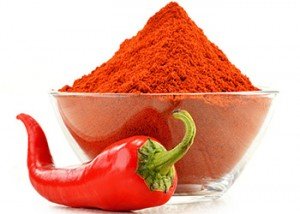 A powerful antioxidant called capsaicin can be found in cayenne pepper and other hot peppers including habanero, chipotle, jalapeno, Anaheim, ancho, and Scotch bonnet peppers. Capsaicin has been shown in several laboratory studies to be toxic to cancer cells.
A powerful antioxidant called capsaicin can be found in cayenne pepper and other hot peppers including habanero, chipotle, jalapeno, Anaheim, ancho, and Scotch bonnet peppers. Capsaicin has been shown in several laboratory studies to be toxic to cancer cells.
A study conducted by the American Association for Cancer Research reports that capsaicin is able to kill prostate cancer cells by forcing them to undergo apoptosis without harming healthy cells.
Another study in 2007 at the University of Nottingham in the UK found that capsaicin killed laboratory cultured lung cancer cells and pancreatic cancer cells. Researchers reported that capsaicin did no harm to surrounding tissue.
An earlier study in 2002 found capsaicin effective in inhibiting the growth of adult T-cell leukemia cells through the induction of cell cycle arrest and apoptosis.
In addition to its cancer-fighting properties, capsaicin is also being studied for a wide variety of other medical uses including arthritis pain, neuropathic pain, and as a topical treatment for dermatologic conditions that have a painful itch such as psoriasis.
The hotter the chili pepper, the more capsaicin it contains. This is a case where you need to let your taste buds be your guide. If you’re not used to eating hot peppers, go slowly at first and build up your tolerance. Also be aware that there can also be a range of “hotness” between pepper varieties and even within the same variety of pepper. Therefore you may need to adjust the quantities used each time you cook with peppers.
The hottest varieties of peppers include habanero or Scotch bonnet peppers. Jalapenos are next in their heat and capsaicin content, followed by the milder varieties, including Spanish pimentos, and Anaheim and Hungarian cherry peppers. Since the capsaicin primarily resides in the seeds and fleshy white inner membranes of peppers, you can control much of the heat by removing these parts. Just remember that it’s capsaicin (the heat) that is considered responsible for most of pepper’s healing and anti-cancer properties.
Ways to Tap into the Anti-Cancer Heat with Hot Peppers
Hot peppers such as cayenne are great for adding some spicy kick to any dish. If you can find fresh that is best. If not, opt for organic dried powder. Hot peppers are great on fish, eggs, chicken, and in any of your favorite savory dips or snacks, including popcorn. Cayenne pepper and lemon juice also make great complements to cooked bitter greens such as kale, collard greens, and mustard greens.
A little chili pepper powder can perk up an omelet, add heat to a black bean or sweet potato soup, or transform an ordinary salad dressing. Add minced chili peppers to plain organic yogurt and use as a condiment or dip.
Pick up some fresh organic tomatoes and make your own homemade salsa using fresh jalapenos or other types of peppers.
Make your own version of the condiment Harissa, popular in some North African and Middle Eastern countries. Purée fresh chili peppers together with extra virgin olive oil, garlic, onion, coriander seeds, cumin, and caraway seeds. Harissa can be used as a condiment for grilled meat or fish, added to roasted vegetables, or mixed with cooked rice.
How to Make Your Own Hot Pepper Flakes
 Instead of buying hot pepper flakes, why not make your own? Either grow or purchase a selection of organic peppers (eg. chili peppers, cayenne peppers, jalapenos, Thai, habaneros, poblanos – mix & match whatever kinds you like).
Instead of buying hot pepper flakes, why not make your own? Either grow or purchase a selection of organic peppers (eg. chili peppers, cayenne peppers, jalapenos, Thai, habaneros, poblanos – mix & match whatever kinds you like).
Dehydrating hot peppers extends their shelf life and makes them easy to throw in recipes. Simply wash peppers and dry them out in your oven at 140 degrees Fahrenheit (on bake) until crisp (approximately eight hours) and then crush them up with a mortar & pestle.
Alternatively, if you have a food dehydrator, you’ll want to dehydrate them under 118 degrees Fahrenheit (47 degrees Celsius) to retain the enzymes within the peppers. Note: Heating food above 118 degrees Fahrenheit denatures the enzymes within foods. This is the basic premise of a raw food diet – to eat food with their enzymes.
Store your homemade dried pepper flakes in an airtight container to maintain freshness. (Small glass mason jars work great for storage). Add pepper flakes to homemade pizza, soups, and salads for extra zing and added cancer armor.
4 – Oregano with Carvacrol
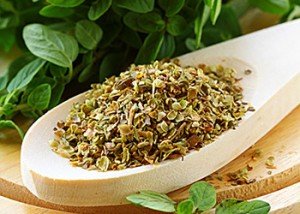 The popular Italian spice oregano is extremely antimicrobial, high in antioxidants, and has been shown to be a powerful parasite fighter as well as a cancer inhibitor. Ounce per ounce, fresh oregano has been shown in a study by the U.S. Department of Agriculture to have higher antioxidants than fruits and vegetables. For example, one tablespoon of fresh oregano was found to contain the same antioxidant activity as a medium-sized apple.
The popular Italian spice oregano is extremely antimicrobial, high in antioxidants, and has been shown to be a powerful parasite fighter as well as a cancer inhibitor. Ounce per ounce, fresh oregano has been shown in a study by the U.S. Department of Agriculture to have higher antioxidants than fruits and vegetables. For example, one tablespoon of fresh oregano was found to contain the same antioxidant activity as a medium-sized apple.
A beneficial phytochemical called quercetin is present in oregano and is known to slow cancer growth as well as promote apoptosis. Oregano also possesses a very special molecule called carvacrol. Carvacrol is a natural disinfectant that stifles the spread of cancer cells. Other herbs that contain carvacrol are thyme, basil, parsley, marjoram, and mint.
When foods are marinated using oregano (along with other ingredients), it helps to reduce the development of heterocyclic amines (HCAs). When meat and other fatty animal foods are cooked at high temperatures, HCAs can form which are carcinogenic.
Ways to Add More Oregano to Your Diet
Oregano tastes great in Mediterranean (Italian & Greek) cuisine. Other ways to include this spice is in chopped meat and on top of chicken. Add oregano to marinades, soups, and sauces. You can use oregano instead of basil to make a robust and savory pesto.
Create a “bouquet garni” (garnish bouquet) with washed fresh oregano leaves still on the stems. Tie the oregano to thyme, basil, parsley, rosemary, tarragon and/or bay leaves with a string. Drop the bouquet in a stock mixture and allow it to simmer until all the flavors are imparted into the stock. Use the stock as a base for chicken or vegetable soup.

.jpg)

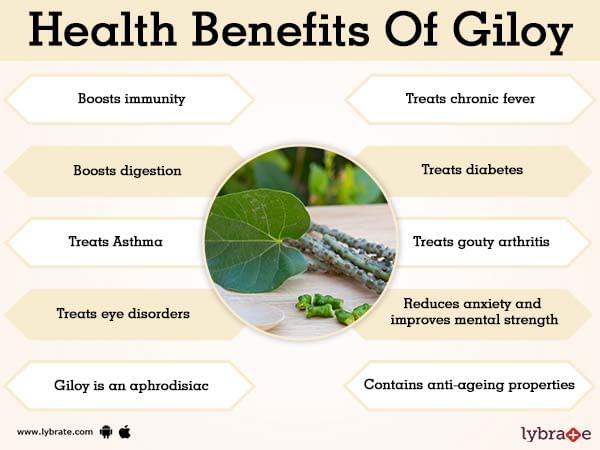
 The turmeric root has been harvested for more than 5,000 years and is popular in Asian dishes, especially those of India. It can be purchased fresh, in its root form (sometimes hard to find), or dried and powdered. Turmeric contains a compound called curcumin, which studies have shown to have powerful anti-inflammatory properties and is widely believed to promote optimal liver function.
The turmeric root has been harvested for more than 5,000 years and is popular in Asian dishes, especially those of India. It can be purchased fresh, in its root form (sometimes hard to find), or dried and powdered. Turmeric contains a compound called curcumin, which studies have shown to have powerful anti-inflammatory properties and is widely believed to promote optimal liver function. Adding turmeric to vegetables and then roasting them adds both color and flavor. Coat veggies in olive oil, sea salt, and black pepper, and add turmeric, ginger, and cumin for a flavorful dish. This same recipe also works great as a marinade for grilled vegetables.
Adding turmeric to vegetables and then roasting them adds both color and flavor. Coat veggies in olive oil, sea salt, and black pepper, and add turmeric, ginger, and cumin for a flavorful dish. This same recipe also works great as a marinade for grilled vegetables. To
To  Garlic has also been studied for its sulphur containing compounds, which have been found to be abundant in phytochemicals and flavonoids – both powerful anti-cancer substances.
Garlic has also been studied for its sulphur containing compounds, which have been found to be abundant in phytochemicals and flavonoids – both powerful anti-cancer substances.
 A powerful antioxidant called capsaicin can be found in cayenne pepper and other hot peppers including habanero, chipotle, jalapeno, Anaheim, ancho, and Scotch bonnet peppers. Capsaicin has been shown in several laboratory studies to be toxic to cancer cells.
A powerful antioxidant called capsaicin can be found in cayenne pepper and other hot peppers including habanero, chipotle, jalapeno, Anaheim, ancho, and Scotch bonnet peppers. Capsaicin has been shown in several laboratory studies to be toxic to cancer cells. Instead of buying hot pepper flakes, why not make your own? Either grow or purchase a selection of organic peppers (eg. chili peppers, cayenne peppers, jalapenos, Thai, habaneros, poblanos – mix & match whatever kinds you like).
Instead of buying hot pepper flakes, why not make your own? Either grow or purchase a selection of organic peppers (eg. chili peppers, cayenne peppers, jalapenos, Thai, habaneros, poblanos – mix & match whatever kinds you like). The popular Italian spice oregano is extremely antimicrobial, high in antioxidants, and has been shown to be a powerful parasite fighter as well as a cancer inhibitor. Ounce per ounce, fresh oregano has been shown in a study by the U.S. Department of Agriculture to have higher antioxidants than fruits and vegetables. For example, one tablespoon of fresh oregano was found to contain the same antioxidant activity as a medium-sized apple.
The popular Italian spice oregano is extremely antimicrobial, high in antioxidants, and has been shown to be a powerful parasite fighter as well as a cancer inhibitor. Ounce per ounce, fresh oregano has been shown in a study by the U.S. Department of Agriculture to have higher antioxidants than fruits and vegetables. For example, one tablespoon of fresh oregano was found to contain the same antioxidant activity as a medium-sized apple.

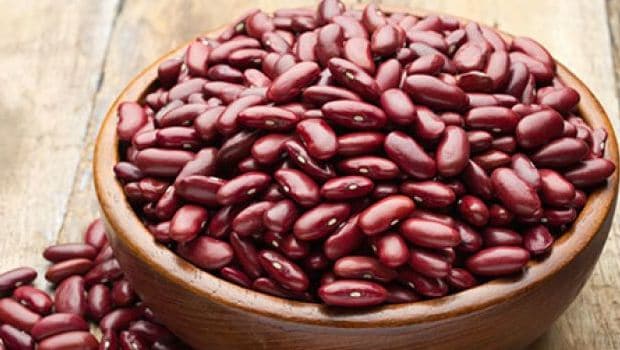
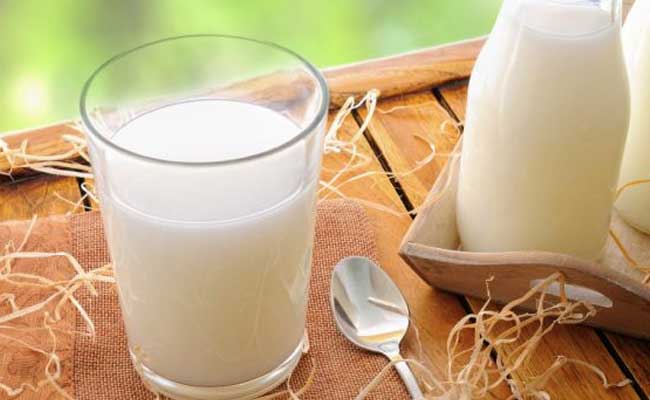

.jpg)





